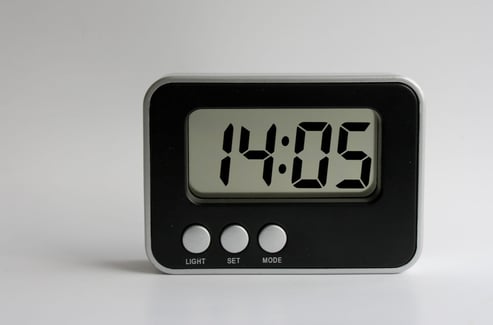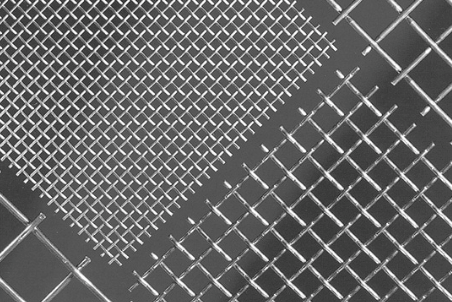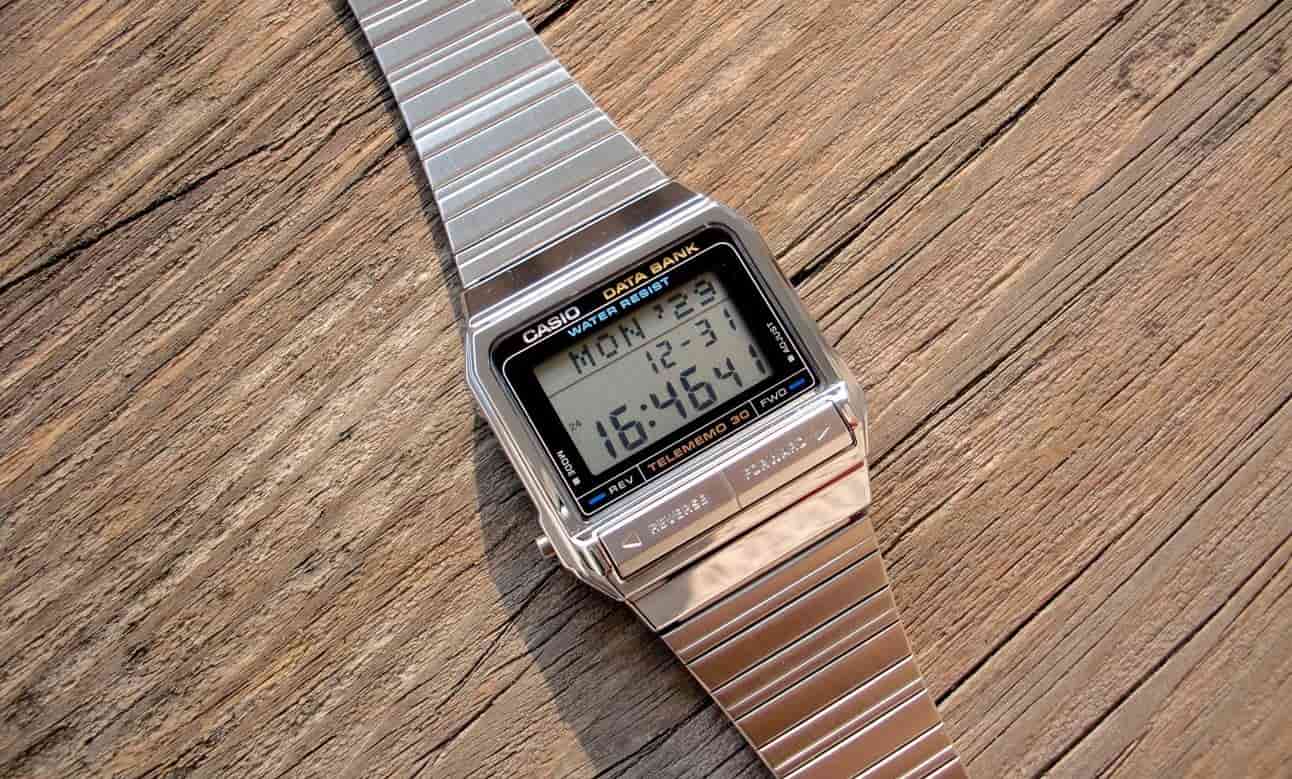Screen Printing Liquid Crystal Displays: Why Use Woven Wire Mesh?
Twisted Nematic Liquid Crystal Displays have been at the forefront of display technology for decades, providing high performance to countless industries. And even though display technology is reaching feats once thought impossible, the demand for them has not slowed down.
Now, several processes and techniques must be employed to manufacture reliable Twisted Nematic Liquid Crystal Displays. Screening printing, for example, is critical to creating and accurately displaying the imagery.
To facilitate the screen printing process, materials like woven wire mesh must be employed. That said, how exactly does woven wire screen printing mesh benefit the manufacturing of Twisted Nematic Liquid Crystal Displays?
W.S. Tyler has been helping customers weave woven wire into everyday life for over 150 years, shedding light on how the material can accommodate their process.
To help you better understand woven wire's position in the Twisted Nematic Liquid Crystal Displays manufacturing process, we wrote the following articles to highlight the material's functions, pros, and cons. It will cover:
- The definition of Twisted Nematic Liquid Crystal Displays
- How Twisted Nematic Liquid Crystal Displays are made
- The definition of screen printing
- The benefits of using woven wire screen printing mesh
- The drawbacks of using woven wire screen printing mesh
What Is a Twisted Nematic LCD?
A Twisted Nematic LCD, or simply TN LCD, is a type of liquid crystal display developed in the late 1960s. These screens manipulate liquid crystal molecules to display words, numbers, imagery, and any other representative patterns.
It was designed to provide users with a simple, efficient, and cost-effective display that is easy to read and applicable to countless applications.

Popular applications include:
- Watches
- Calculators
- Monitors
- Screens for various electrical devices (i.e., gas pump displays)
While other technologies, such as IPS and OLED, have been developed since its creation, TN LCDs continue to flourish in the display market.
How Is a Twisted Nematic LCD Made?
The manufacturing of a Twisted Nematic LCD begins with the cleaning of two glass substrates. It is imperative that all debris and impurities are removed during this process.
You should be left with a smooth, clean surface that can house the other layers of the display.
A thin layer of conductive material, such as Indium Tin Oxide (ITO), is applied to one or both of the glass substrates. A precise screen printing process is used to create specific patterns that will form the electrodes that manage the pixels.
After applying the conductive layer, an alignment layer must be put in place. Once again, screen printing is used to apply a layer of polymer.
This polymer layer is responsible for controlling how the liquid crystal molecules align.
To ensure a uniform and favorable distance between the two glass substrates is achieved, spacers are evenly distributed over one of the substrates. These spacers often come in the form of tiny beds or columns.
Screen printing is employed once more, this time to apply a sealing agent around the edges of one of the two substrates. This step must be carried out properly, as this sealant serves two purposes:
- Keeps the liquid crystal material contained within the display
- Create and maintain a vacuum/atmosphere within the display
But before the display is sealed, the liquid crystal material is fed between the two glass substrates. This is often conducted in a vacuum environment to combat air bubbles.
Upon completion of the sealing process, the outer sides of the glass substrates are outfitted with polarizing films. They should be fitted perpendicular to each other, as this is critical to the functions of the display.
The TN LCD screen can then be installed, tested, and used.
What Is Screen Printing?
Screen printing is a printing process that uses screen media, such as woven wire mesh, to evenly displace ink onto a substrate. A photo-sensitive emulsion is applied to the mesh to create a stencil that prevents ink flow in specific areas.
The resulting effect is a screen that affords the accurate transfer of various patterns/designs onto the substrate.
Why Use Woven Wire Mesh?
Woven wire mesh is best defined as a versatile screen media that is comprised of thousand of horizontal and vertical wires that are interlocked, forming a distinct weave pattern. A heavily monitored weaving process is employed to ensure the openings throughout the weave are both uniform and precise.
Learn everything you need to know about the woven wire weaving process in this
all-encompassing article:
Virtually every parameter of the weave, including the alloy, weave pattern, diameter of the wires, and mesh count, can be customized to meet your exact needs. For this reason, it is widely considered to be an essential material to countless industries.

But how does woven wire benefit the screen printing of a Twisted Nematic LCD?
Well, first and foremost, woven wire delivers a balance of precision and uniformity unmatched by similar materials. This is critical to creating the various layers that facilitate the manipulation of the liquid crystal molecules.
To that end, the weaves of woven wire are known for featuring pore openings that are tight, consistent, and rigid. As a result, patterns that control pixel orientation and produce clear imagery are easily achievable.
Another benefit of note has to do with the metallic make-up of the wires used to weave woven wire. These wires, typically drawn from a stainless steel alloy, offer tremendous mechanical strength, corrosion resistance, and heat resistance.
Consequently, woven wire screens have the ability to withstand repeated use even when exposed to the solvents and cleaning agents associated with the screen printing process. This longevity reduces the need for replacement, deeming woven wire highly cost-effective.
What Are the Drawbacks of Using Wove Wire?
While woven wire is widely used for the screen printing of electrical components, it has the potential to present some pitfalls to your process. One of the more common pitfalls is the material's ability to convey finer details.
Woven wire may present physical limitations that could affect the resolution and clarity of the print. That said, specialized value-added processes can be applied to remedy these issues.
It was stated above that woven wire is very cost-effective in the long run when replacement costs associated with other materials are taken into consideration. However, its initial cost is much higher than most screening materials, which can be difficult to maneuver within tight budgetary constraints.
Thicker inks can also be a burden when using woven wire screens. The characteristics of woven wire can potentially reduce the flow of ink during the screen printing process.
This would require multiple passes of the squeegee mechanism, ultimately hindering the productivity of your process.
Pick the Right Screen Printing Technique To Capture Peak Accuracy in Your Displays
Twisted Nematic Liquid Crystal Displays are displays that manipulate liquid crystal molecules to create clear, cost-effective displays that are used for hundreds of electronic devices. To ensure the pixels are aligned properly and the imagery is precise, a screen printing process built upon high-quality woven wire mesh is integrated into the manufacturing process.
But to ensure your displays are as clear, accurate, and efficient as possible, you will need to gain an understanding of the pros and cons of the more popular screen printing techniques. This information will allow you to identify which one best suits your process, which will help you produce best-in-class displays.
With over 150 years of experience, W.S. Tyler is here to help you leverage the distinguished yet versatile characteristics of woven wire to help create an efficient process.
Read the following article to learn everything you need to know about the many screen printing techniques used today:
About Ronnie Brown
Ronnie is the Content Writer for W.S. Tyler and has four years of experience as a professional writer. He strives to expand his knowledge on all things particle analysis and woven wire mesh to leverage his exceptional writing and graphic design skills, creating a one-of-a-kind experience for customers.




